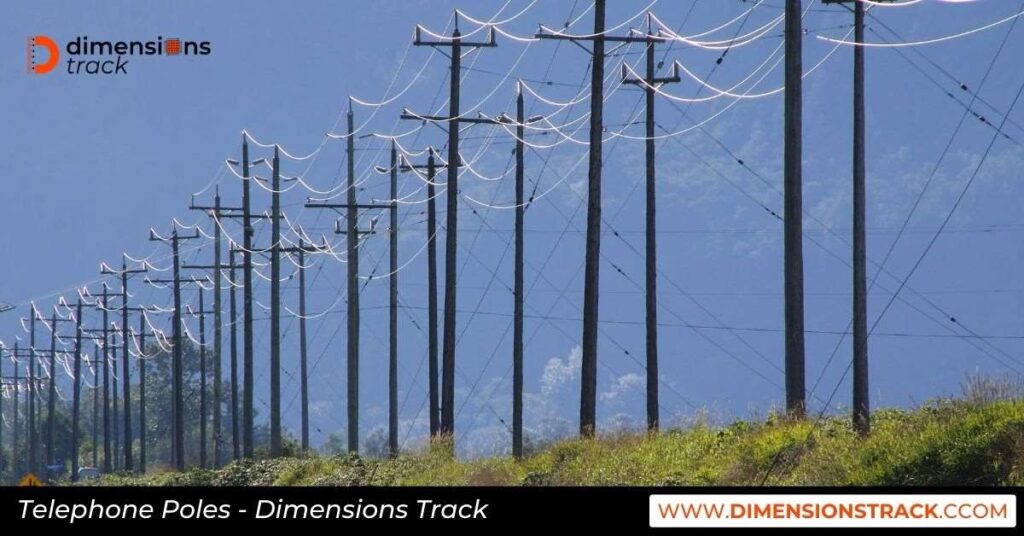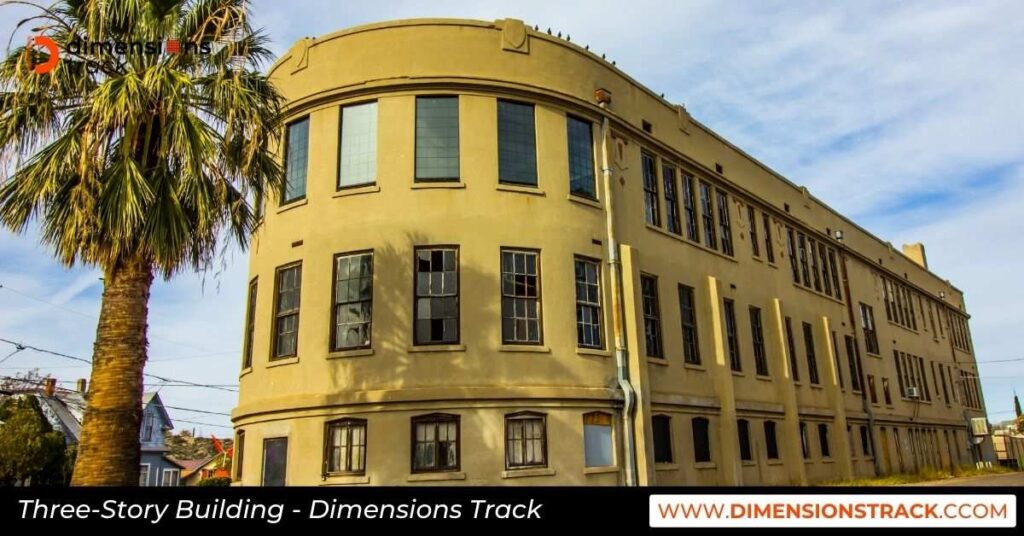Ever wondered how far is 30 feet? It’s a distance we encounter more often than we might think, yet it can be tricky to visualize. Whether you’re planning a home renovation, designing a landscape, or just curious about the world around you, understanding this measurement can be incredibly useful. In this exploration, we’ll discover nine fascinating things that measure up to 30 feet, giving you a fresh perspective on this common yet intriguing dimension.
Unraveling the 30-Foot Mystery
Before we dive into our list, let’s get a grip on just how long 30 feet really is. Picture this: you’re standing at one end of a small parking lot, and your car is parked at the other end. The distance between you and your vehicle? That’s likely close to 30 feet. It’s a length that’s substantial enough to notice, yet not so vast that it’s hard to comprehend.
To put it in more precise terms, 30 feet equals:
- 9.144 meters
- 360 inches
- 10 yards
It’s a measurement that pops up in architecture, sports, and nature more often than you might expect. As we explore various objects and structures that measure up to this length, you’ll start to see the world around you in a new light.
1. Half a Cricket Pitch: Sport Meets Measurement

Cricket, a sport beloved by millions around the world, offers us our first intriguing 30-foot comparison. A standard cricket pitch measures 22 yards, which translates to 66 feet. This means that half of a cricket pitch is precisely 33 feet – just a tad over our 30-foot mark.
Imagine standing at one end of a cricket pitch and walking to the middle. You’d have covered almost exactly how far 30 feet is. This perspective not only gives cricket fans a new way to appreciate the game but also provides a relatable reference point for those unfamiliar with the sport.
Here’s how the cricket pitch breaks down:
| Section | Length (feet) | Comparison to 30 feet |
|---|---|---|
| Full Pitch | 66 | 2.2 times longer |
| Half Pitch | 33 | 3 feet longer |
| Length between wickets | 58 | Nearly twice as long |
Understanding this measurement can enhance your appreciation of the game. When you watch a bowler sprint up to deliver the ball, or see a batsman make a quick run, you’re witnessing athletes navigate distances very close to our 30-foot measure.
2. London’s Iconic Double-Decker: A Moving Measure

When pondering things that are 30 feet long, the iconic London double-decker bus springs to mind. These beloved red giants of the road are a symbol of British culture and a practical example of our target measurement.
The average new Routemaster double-decker bus measures approximately 36.5 feet in length. While this is slightly longer than 30 feet, it’s close enough to give us a vivid, moving image of our measurement.
Imagine standing on a London street corner. As one of these buses pulls up to the stop, its length stretches just past the 30-foot mark. This comparison is particularly useful because these buses are a familiar sight, whether you’ve seen them in person or in countless movies and TV shows set in London.
Here’s how different types of London buses compare:
| Bus Type | Length (feet) | Comparison to 30 feet |
|---|---|---|
| New Routemaster | 36.5 | 6.5 feet longer |
| Standard Double-Decker | 33.5 | 3.5 feet longer |
| Single-Decker | 39.4 | 9.4 feet longer |
Next time you’re wondering how far is 30 feet, just picture a London double-decker bus with a few feet shaved off the end. It’s a comparison that brings a touch of British charm to our understanding of measurements!
3. Christmas Tree Trio: Festive Heights

When the holiday season rolls around, many of us find ourselves pondering the perfect height for a Christmas tree. Here’s where our 30-foot measure comes into play in a festive way: imagine three large Christmas trees stacked one on top of the other.
Typically, a generously sized Christmas tree for a spacious home or a small public display stands about 10 feet tall. So, if you were to stack three of these impressive evergreens on top of each other, you’d have a towering festive column measuring right around 30 feet!
This comparison not only helps us visualize how long 30 feet is but also puts into perspective the truly massive Christmas trees we see in famous locations. For instance, the Rockefeller Center Christmas tree in New York City often stands over 70 feet tall – more than twice our 30-foot measure!
Here’s a quick breakdown of Christmas tree heights:
- Average home Christmas tree: 6-7 feet
- Large home or small public display tree: 10 feet
- Our 30-foot comparison: 3 x 10-foot trees
- Rockefeller Center tree: Often exceeds 70 feet
This festive comparison gives us a seasonal way to understand the 30-foot measurement. Next time you’re admiring a particularly tall Christmas tree, try to estimate how many “normal” trees it would equal. You might find yourself with a new appreciation for both holiday decorations and measurements!
4. De Gooyer Windmill: A Slice of Dutch Heritage

Let’s take a trip to Amsterdam, where the De Gooyer windmill stands as a testament to Dutch engineering and history. This magnificent structure, while not exactly 30 feet tall, gives us another interesting way to visualize our measurements.
The De Gooyer windmill stands at an impressive height of about 89 feet. Now, here’s where it gets interesting: 30 feet is almost exactly one-third of the windmill’s total height. Imagine dividing this iconic Dutch landmark into three equal parts – the bottom section would be our 30-foot measure.
This comparison not only helps us understand how far 30 feet is in vertical terms but also gives us a sense of the scale of historical architecture. It’s a reminder that our 30-foot measure, while significant, is just a fraction of some of the impressive structures humans have built throughout history.
To put this into perspective:
- Total height of De Gooyer windmill: 89 feet
- Our 30-foot measure: Approximately the bottom third of the windmill
- Remaining height: About 59 feet, or nearly two more 30-foot sections
Next time you see a picture of a traditional Dutch windmill, try to visualize it divided into thirds. The bottom portion will give you a good idea of what 30 feet looks like in a vertical context!
5. Bowling Lane Halved: Striking Proportions

Let’s roll into another fascinating comparison: the bowling lane. If you’ve ever enjoyed a game of bowling, you’ve interacted with a distance very close to our 30-foot measure without even realizing it.
A standard bowling lane, from the foul line to the headpin, measures 60 feet in length. This means that half a bowling lane is almost exactly 30 feet. The next time you’re at a bowling alley, take a moment to appreciate this measurement. From the foul line to the middle of the lane is about how far 30 feet is.
This comparison is particularly interesting because it gives us a sense of the distance in a familiar, recreational context. It helps us understand the power and precision needed in bowling – imagine the force required to send a bowling ball rolling effectively for 60 feet!
Let’s break down the bowling lane measurements:
| Section | Length (feet) | Comparison to 30 feet |
|---|---|---|
| Full Lane | 60 | Twice as long |
| Half Lane | 30 | Exactly our measure |
| Approach Area | 15 | Half our measure |
Understanding this can give you a new appreciation for the sport of bowling. The next time you’re lining up your shot, remember: you’re aiming at a target that’s two 30-foot lengths away!
6. Three U-Haul Convoy: Moving Perspectives

When it comes to things that are 30 feet long, here’s a comparison that might come in handy next time you’re moving house: three standard U-Haul trucks lined up end to end.
The typical U-Haul truck, specifically the 10-foot truck model, measures (you guessed it) 10 feet in length. So, if you were to park three of these trucks bumper to bumper, you’d have a convoy stretching almost exactly 30 feet.
This comparison is particularly useful because U-Haul trucks are a common sight on roads across North America. Many of us have either rented one of these trucks or seen them during a move. By visualizing three of them in a row, we can get a tangible sense of how long 30 feet really is.
Here’s a quick breakdown:
- Length of one 10-foot U-Haul truck: 10 feet
- Our 30-foot measure: 3 x 10-foot U-Haul trucks
- Cargo space in a 10-foot U-Haul: Typically 402 cubic feet
This comparison not only helps us visualize the length but also gives us a sense of volume. If you’re ever planning a move and wondering about truck size, remember: three of the smallest U-Haul trucks lined up would give you about 30 feet of length and over 1,200 cubic feet of cargo space!
7. Telephone Poles: Connecting Distances

Telephone poles, those ubiquitous features of our urban and rural landscapes, offer another interesting way to visualize 30 feet. While the height of telephone poles can vary, many standard poles stand at about 35 to 40 feet tall.
This means that 30 feet is just shy of the full height of a typical telephone pole. Imagine looking up at a telephone pole in your neighborhood – the distance from the ground to a point near the top is about how far 30 feet is vertically.
This comparison is particularly useful because telephone poles are such a common sight. They’re part of our everyday visual landscape, making them an easy reference point for understanding vertical distances.
Here are some interesting facts about telephone poles and their relation to our 30-foot measure:
- Average height of a telephone pole: 35-40 feet
- Our 30-foot measure: About 5-10 feet shorter than a full pole
- Usual distance between poles: Often around 125 feet
Understanding this can give you a new perspective on the infrastructure around us. Next time you’re out for a walk, try to estimate 30 feet by looking at a nearby telephone pole. You might find yourself with a newfound appreciation for the scale of our built environment!
8. Six Blue Whale Hearts: Ocean’s Giants

For a truly awe-inspiring comparison, let’s dive into the ocean and consider the blue whale – the largest animal ever known to have existed on Earth. While a blue whale itself is much longer than 30 feet (they can grow up to 100 feet!), there’s a fascinating way to relate our measurement to these marine giants.
The heart of an adult blue whale is enormous – about the size of a small car. On average, it measures about 5 feet in length. So, if you were to line up six blue whale hearts end to end, you’d have a row stretching about 30 feet!
This comparison not only helps us visualize how long 30 feet is but also gives us a mind-boggling sense of the scale of these incredible creatures. Imagine a line of six car-sized hearts – that’s the length we’re talking about!
Here are some fascinating blue whale facts related to our 30-foot measure:
- Length of one blue whale heart: About 5 feet
- Our 30-foot measure: Equivalent to 6 blue whale hearts
- Weight of a blue whale heart: Up to 400 pounds
- Total length of an adult blue whale: Up to 100 feet (more than 3 times our measure!)
This oceanic comparison gives us a unique way to appreciate both the immensity of blue whales and the significance of 30 feet as a measurement.
9. Three-Story Building: Vertical Perspective

Our final comparison brings us back to dry land and gives us a vertical perspective on our 30-foot measure. A typical three-story building stands at almost exactly 30 feet tall.
This comparison is particularly useful because many of us interact with buildings of this height on a regular basis. Whether it’s an apartment complex, a small office building, or a large house, three-story structures are a common feature in many urban and suburban landscapes.
Understanding this can be particularly useful in various contexts:
- Architecture and Design: When planning or visualizing building projects
- Emergency Services: For firefighters estimating ladder reach
- Urban Planning: When considering the impact of building heights on a cityscape
Next time you’re walking past a three-story building, take a moment to appreciate its height. You’re looking at a real-world example of our 30-foot measure!
“The world is full of magical things patiently waiting for our wits to grow sharper.” – Bertrand Russell
This quote perfectly captures the essence of our exploration. The everyday world around us is filled with fascinating measurements and proportions, just waiting for us to notice and appreciate them.
Wrapping Up: The 30-Foot Takeaway
As we’ve journeyed through these nine comparisons, we’ve explored how far 30 feet is in a variety of contexts. From the sporting world of cricket to the depths of the ocean with blue whales, we’ve seen that this measurement pops up in surprising and fascinating ways.
These comparisons give us a richer understanding of the world around us. They help us appreciate the scale of both human-made structures and natural wonders. Whether you’re planning a home improvement project, engaging in sports, or simply curious about the world around you, having a good grasp of how long 30 feet is can be surprisingly useful.
Remember, measurements like 30 feet are more than just numbers – they’re a way of understanding and interacting with our environment. The next time you encounter something close to 30 feet in length or height, you’ll have a wealth of comparisons to draw upon, enriching your perception of the space around you. So, the next time someone asks you “How far is 30 feet?” or “What are some things that are 30 feet long?”, you’ll have plenty of interesting and varied examples to share. From the practical to the whimsical, these comparisons show us that even a seemingly simple measurement like 30 feet can open up a world of fascinating insights.

Henry Martin is a dedicated author at Dimensions Track, specializing in creating informative guides on the dimensions and measurements of various objects. With a passion for providing precise and reliable information, Henry helps readers make well-informed decisions about everyday products and spaces. His attention to detail ensures that each guide is thorough, easy to understand, and packed with useful insights for anyone seeking accurate measurements.







